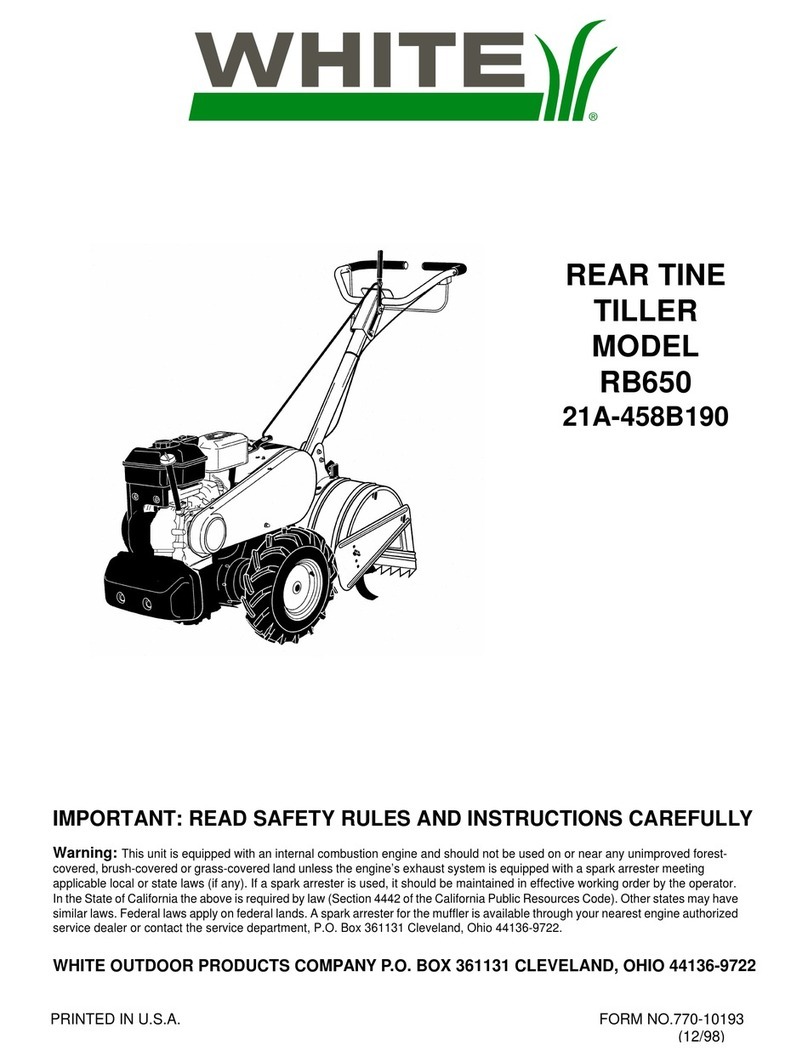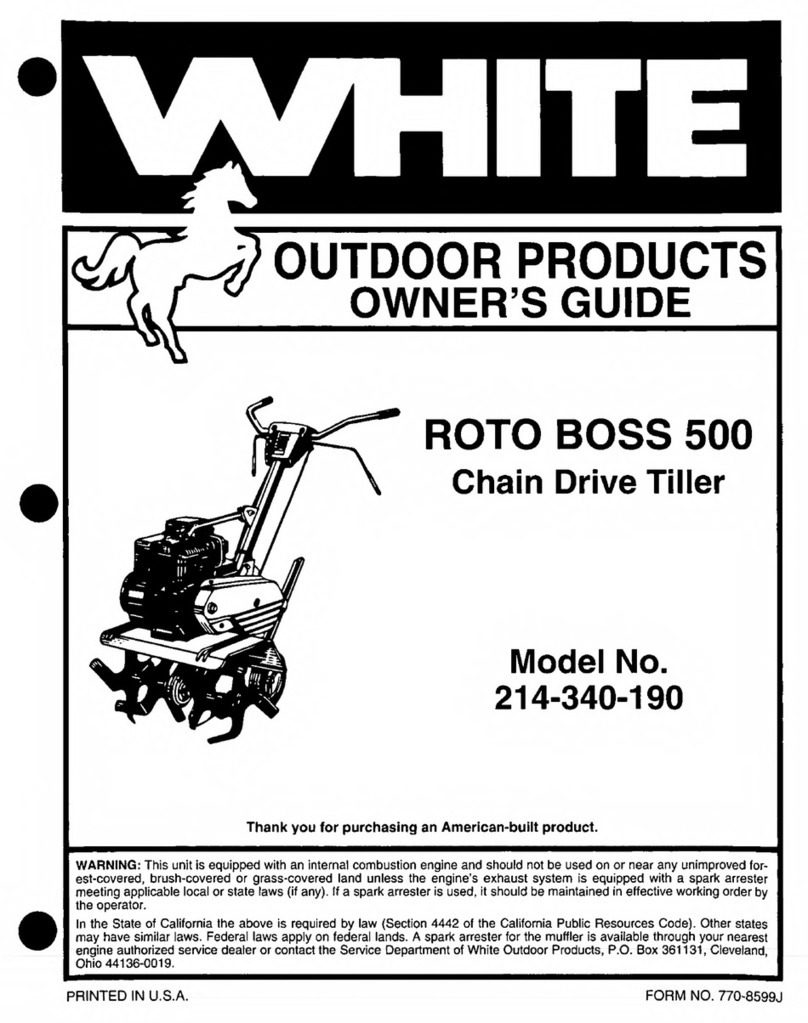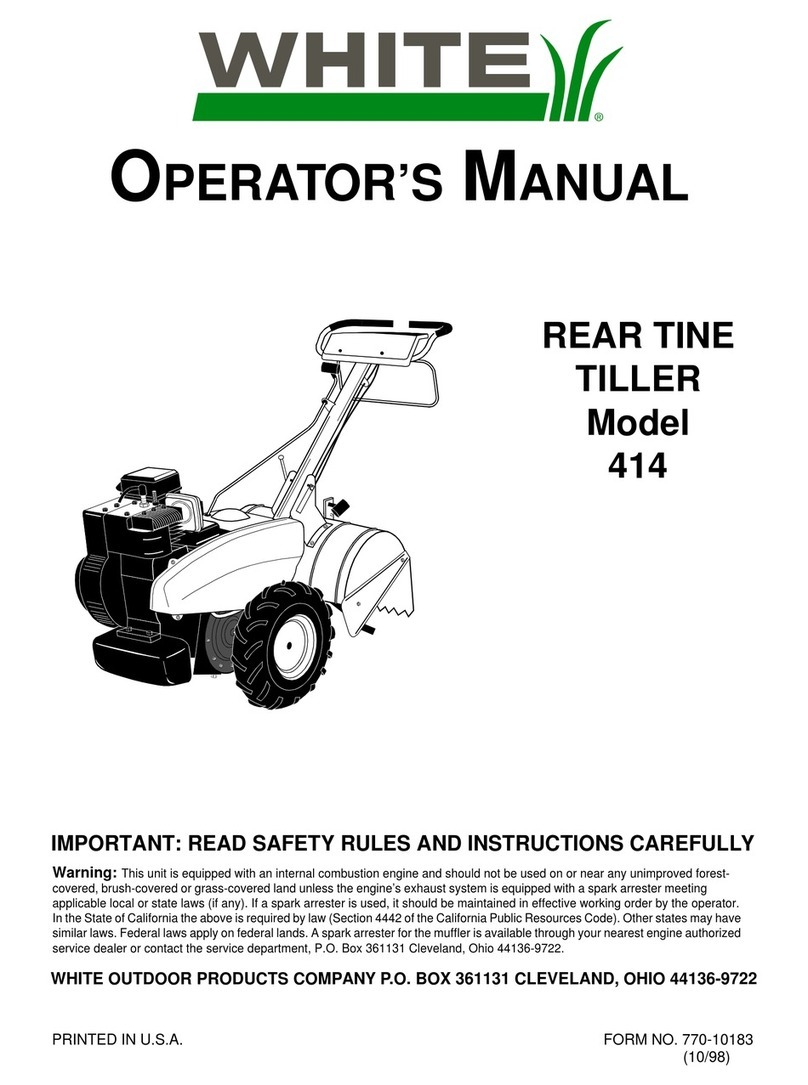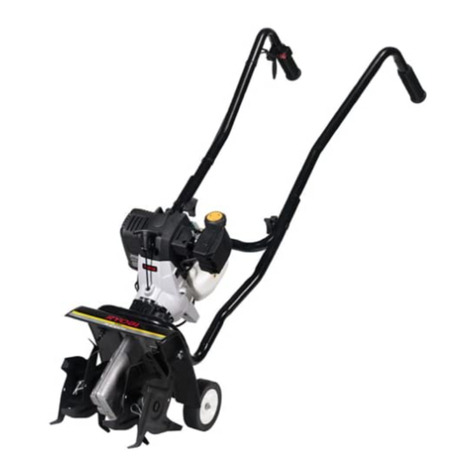White Roto Boss 510 User manual
Other White Tiller manuals
Popular Tiller manuals by other brands

MTD
MTD OHV Series Original operating instructions

YAT
YAT YT5601-01 Assembly, Use, Maintenance Manual

Craftsman
Craftsman 917.296010 owner's manual
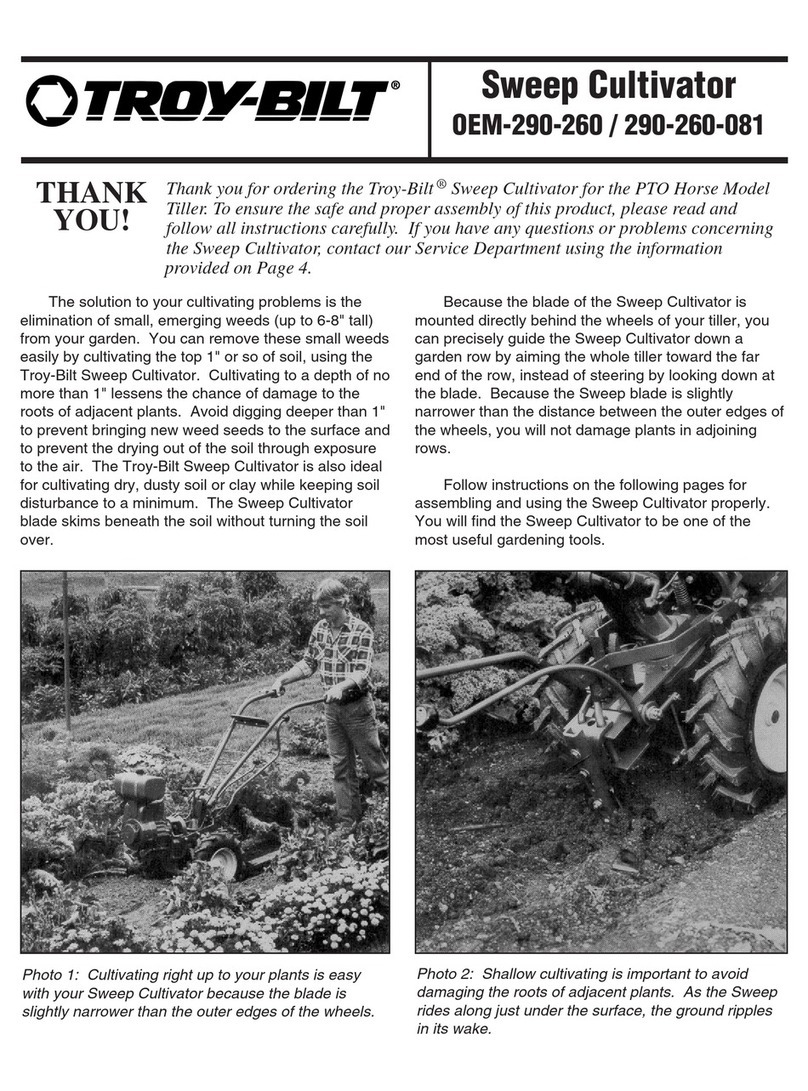
Troy-Bilt
Troy-Bilt OEM-290-260 Operator's manual

Scheppach
Scheppach MTP560 Translation from the original instruction manual

GARDEN WAY
GARDEN WAY 12194 owner's manual

Classen
Classen STAND-AER SA-25 Operator's manual and parts list
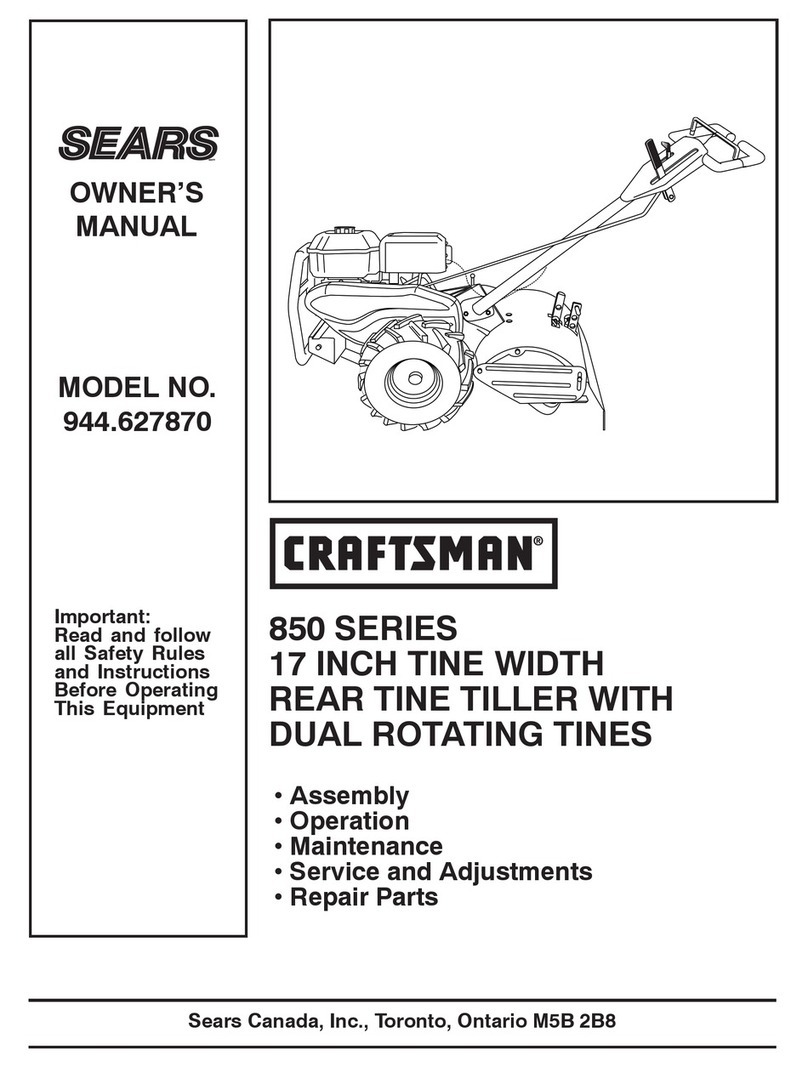
Craftsman
Craftsman 850 Series owner's manual

DR
DR PILOT 2 Safety & Operating Instructions

Altrad
Altrad ATIKA BH 1400 N Original instructions, safety instructions, spare parts

WIL-RICH
WIL-RICH 2500 Operator's manual

Viking
Viking HB 685 instruction manual
